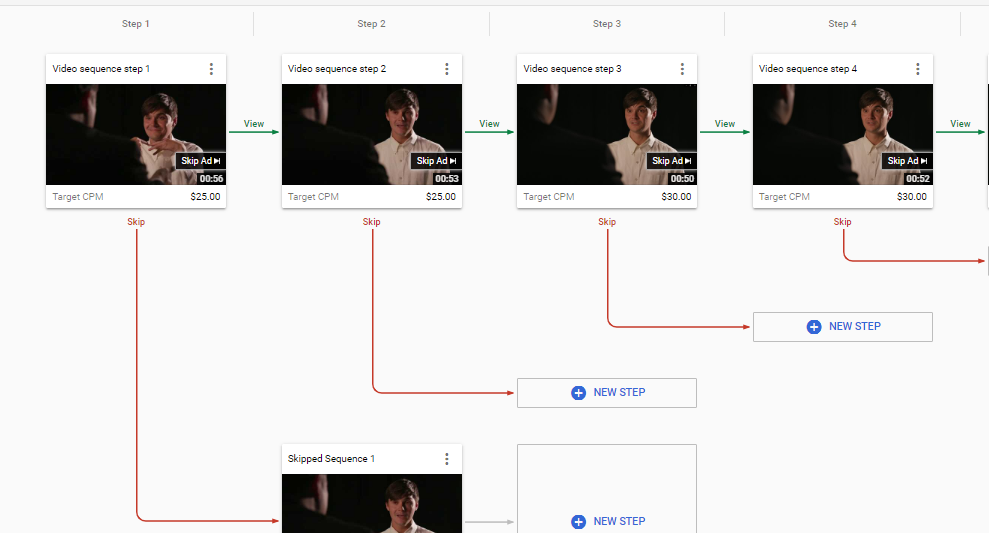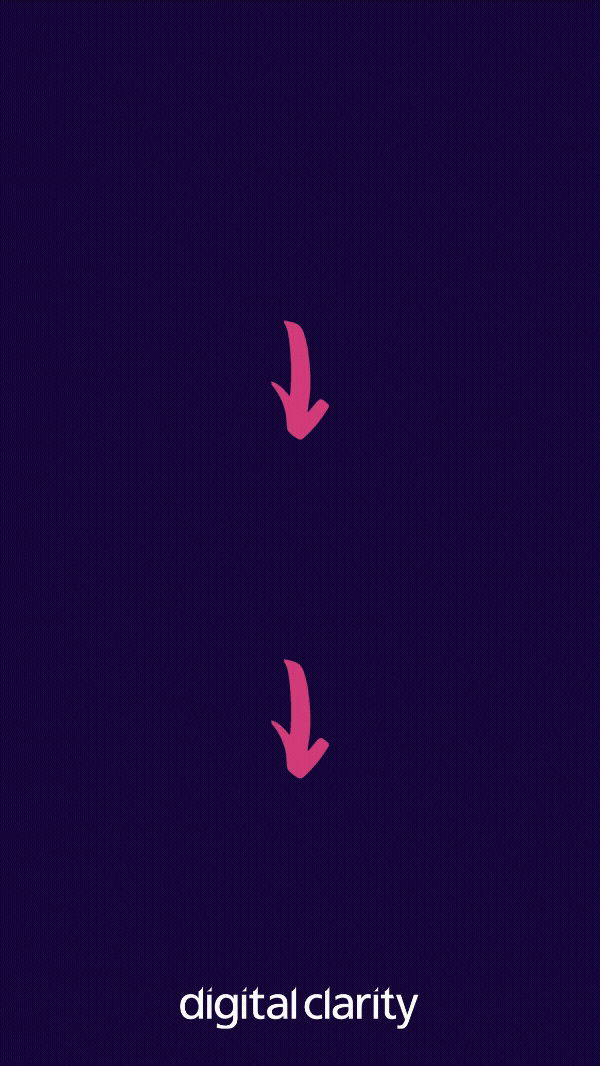The modern-day buyer is inundated with influences from many angles.
On average, we spend 3 hours a day on our phones, and reportedly 16-25-year-olds spend 3 hours a day solely on social media apps.
This adds up to a lot of time where our attention is being pulled in many different directions by an array of different multi-media influences.
Getting your brand in front of your target audience just once won’t cut it anymore. The difficulty for many advertisers is grabbing people’s attention in just one short video or trying to explain a brand story within restricted character limits.
This is where ad sequencing comes in. Ad sequencing will allow you to repeatedly put yourself in front of your target customer, and properly explain to them who you are by creating a brand narrative.
What is Ad Sequencing?
Ad sequencing allows you to choose a series of ads that are shown to your audience in a particular order.
This means that within one ad sequence you can: engage your audience, make them aware of your brand, and encourage conversions. A process that would normally take multiple campaigns and months to plan and execute.
Ad sequencing is more than just remarketing or sequential campaign messaging. It is more than simply running one type of ad messaging focusing on brand awareness one month before moving onto conversion-driven ad messaging the next.
Ad sequencing is the deliberate planning of the exact order in which your audience will see each ad and provides you with the certainty that users will only see a particular ad if they have seen another previously.
Why Should You Be Using Ad Sequencing?
It has been proven time and time again that messages are more effective when repeated. The ‘Rule of 7’ is often used when determining how many times a person needs to be exposed to a message to take it in and remember it.
However, studies have shown that people are most susceptible to messages they’ve been exposed to at least 10-20 times (Bornstein, Exposure and Effect).
Of course, there is a limit to the number of times somebody will tolerate seeing the same advert without pulling their hair out. We’ve all been there. Ad sequencing helps to combat this frustration.
With ad sequencing, you can choose what order your audience will see your ads, constructing a narrative that will be more likely to spark interest than stand-alone ads. You can repeatedly convey your brand message, and construct a brand narrative, without bombarding your audience with the exact same ad.
Google determines that ad sequencing can improve ad recall by 74% (Think With Google).
This is pretty impressive evidence, reiterating that messages really are more effective when repeated.
How Can You Implement Ad Sequencing?
Paid media platforms, such as Google, Facebook, Twitter and LinkedIn, are increasingly providing advertisers with the means to create ad sequences in their online marketing campaigns. Some will require more backbone and organisation from your part, but nevertheless ad sequencing can be achieved even if the social media platform doesn’t offer a specific ad sequencing function.
YouTube
Google offers the most comprehensive means of creating ad sequences. The video sequencing ad format they offer allows you to choose a sequence of video ads to appear in a specific order once a user has seen (at least 5 seconds), viewed (at least 30 seconds) or skipped the first ad, and allows you to create flows for each eventuality.
As you can see from the example flow below, Google’s video ad sequencing allows you to customise the flow to respond to how a user has interacted with your ads. You can determine the next video a user will see if they viewed the previous ad. You can also choose a different ad as the next step if they skipped the previous ad.
If a user was to view the previous ad, it shows they’re interested and their attention was captured, so you can go on to show them a longer more informative video in the next step. If they skip, it’s fair conclude that the first ad didn’t particularly grab their attention. Or they simply didn’t have the time to watch the first video past 5 seconds.
After a user skips an ad, you’re going to want the next step to grab their attention, or you may just want to repeat the skipped ad to reiterate its message.
YouTube Ad Sequencing Examples
Adidas used a structured video ad sequence to instigate a 317% lift in product interest (Think With Google). Their first video in the sequence featured a long-form ‘hero’ video that followed the journey of leading football players. This first video aimed to tell a story, putting their new product into context.
Adidas realised that many users would skip the first video ad at 5 seconds, and even if they didn’t skip, many would not watch the video in enough depth to even see the product they were promoting. Therefore, the second video in the sequence would be a short 6-second unskippable ad featuring the product up close and in-depth.
The third video in the sequence was another long-form video that continued the story, putting the product in context, and would only be shown to those who had seen the previous 6-second product ad.
If users skipped this third ad, they would then be shown the 6-second product advert again. If users viewed the third ad, next they would be shown an in-depth product video including product specs.
Social Media
Facebook Ad Sequencing
Facebook offers an ad sequencing tool when using reach and frequency campaigns. This allows you to arrange up to 50 ads that are served in a particular order.
However, using the ad sequencing feature in your reach and frequency campaign does not allow you to specify whether a user has to interact with an ad in a certain way before they are shown then next.
Reach and frequency campaigns will not suit every advertiser as you have to plan, book and purchase the campaign before launch and are limited to what edits you can make after it’s live. Reach and frequency campaigns are also only available to qualified advertisers.
If you’re not able to use a reach and frequency campaign to make use of the ad sequencing tool, or you want to specify that a user must interact with an ad before being shown another, then Facebook’s retargeting and custom audience features will allow you to create your own ad sequences.
Facebook allows you to create custom audiences of users who have engaged with your previous ads. This could include video views, lead generation form opens and submissions, event interest or Facebook/Instagram profile visits.
LinkedIn and Twitter Ad Sequencing:
- On LinkedIn you can retarget based on video views, and lead gen form opens/submissions.
- Twitter allows you to retarget based on impressions, clicks, engagements such as likes and retweets, and video views.
In order to create an ad sequence in your social media campaigns, serve your first ad to a large audience pool. A video will work best for this first ad. Then, serve the second ad to a custom audience of those who have engaged with the first ad. For example, those who viewed at least 10% of your video.
Serve the next ad in the sequence to a custom audience of those who engaged with the previous ad, and so on.
Best Practices
Most businesses prioritise driving conversions. And who can blame them, because after all this is what will provide return-on-ad-spend. However, asking your audience straight away to purchase your product or provide you with their contact details can often lead to disappointing results.
Ad sequencing allows you to nurture your target audience and develop a narrative first before asking anything of your audience. Your ad sequence should build brand awareness, then introduce your product or service, and finally push for a conversion.
The key to using this method of ad sequencing is to start big. Twitter will only serve ads to an audience greater than 100 users, LinkedIn greater than 300, and Facebook greater than 1,000! This means that you must serve the first ad to a large enough audience to generate enough engagements to form the next audience pool.
Conclusion
Ad sequencing allows us to get creative with marketing campaigns. It reminds us that not every single ad must push for conversions or ask of something from your target audience. Instead, ad sequencing provides advertisers with the chance to create a brand narrative before pushing for sales or lead generation, ultimately leading to better ad recall and product interest.
If you have any questions please do not hesitate to contact me via LinkedIn (Alice Stapleton) I’d love to hear from you. For more information or advice on your digital marketing get in touch with the team at Digital Clarity.








